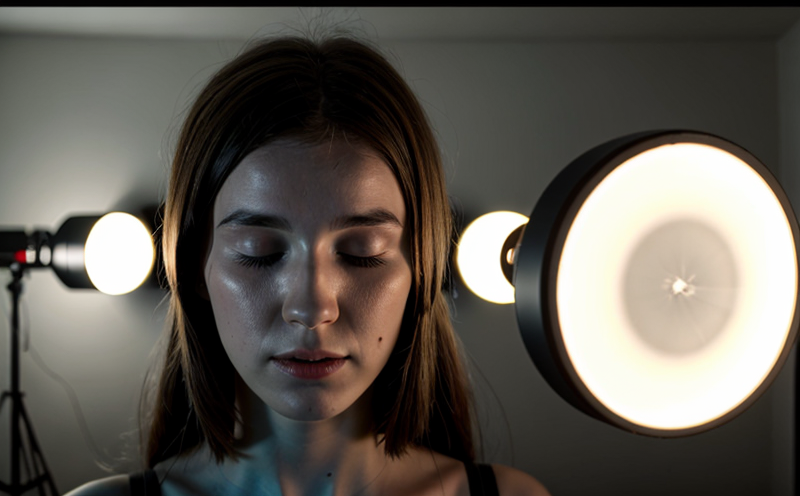CIE TN 006 Stroboscopic Visibility Measure Testing of Lighting Devices
The CIE TN 006 standard, titled "Stroboscopic Visibility Measures of Lighting Devices," is an essential tool for the lighting industry. This standard provides a method to measure and assess how visible stroboscopic effects are caused by lighting devices. Stroboscopic effects can significantly impact human perception, especially in environments where high-frequency light sources are used, such as entertainment venues or industrial settings.
The CIE TN 006 test is critical for ensuring that lighting products do not produce harmful or uncomfortable visual artifacts. The standard defines the measurement of stroboscopic visibility and provides criteria to evaluate compliance with specific levels of flicker and stroboscopic effects. This testing ensures that lighting devices meet international safety standards, protecting both users and operators.
The test procedure involves subjecting the lighting device under standardized conditions to a series of tests aimed at measuring its stroboscopic visibility. The equipment used in this process includes specialized photometers and oscilloscopes, which are calibrated according to ISO/IEC 17025 standards for accurate measurements.
During testing, the lighting device is exposed to a controlled environment where flicker frequencies are systematically varied. The test results indicate whether the stroboscopic effects are within acceptable limits as defined by CIE TN 006. Compliance with this standard ensures that lighting products meet international safety and quality standards, enhancing user comfort and reducing potential health risks.
The primary goal of the CIE TN 006 testing is to provide a quantitative measure of stroboscopic visibility, which helps manufacturers optimize their designs for optimal performance while minimizing adverse visual effects. By adhering to these stringent tests, lighting device producers can ensure that their products meet the highest standards set by international authorities.
In addition to ensuring safety and compliance with regulations, CIE TN 006 testing plays a pivotal role in enhancing user experience. By reducing unwanted flicker and stroboscopic effects, this testing contributes significantly to creating more comfortable and safe environments for end-users. This is particularly important in settings where long exposure to lighting devices is required, such as in offices or hospitals.
The CIE TN 006 standard also aids in the development of new lighting technologies by providing a benchmark against which innovations can be evaluated. Manufacturers can use this test to identify potential areas for improvement and to develop products that meet evolving industry standards.
Industry Applications
Film and television studios, where high-intensity lights are used in close proximity to actors.
Hospitals and healthcare facilities, ensuring minimal visual disturbance for patients and staff.
Aerospace and aviation industries, where precise lighting is critical for safety.
Manufacturing plants, particularly those with rotating machinery or conveyor belts that require consistent lighting conditions.
The CIE TN 006 testing process helps ensure that lighting devices in these environments do not cause visual discomfort or pose a risk to human health. By adhering to this standard, manufacturers can provide products that meet the specific needs of various industries and applications.
Quality and Reliability Assurance
Compliance with ISO/IEC 17025 standards for testing equipment ensures accurate and reliable results.
Consistent quality control through standardized test procedures that are regularly reviewed and updated.
The CIE TN 006 standard is integral to the process of quality assurance, providing a clear framework for testing that helps maintain consistent product performance. By adhering to this standard, manufacturers can ensure that their products consistently meet international safety and quality standards. This not only enhances user satisfaction but also builds trust with clients and regulatory bodies.
Regular calibration of test equipment according to ISO/IEC 17025 ensures that all measurements are accurate and consistent. This is crucial for maintaining the reliability of testing results, which in turn helps manufacturers maintain high-quality standards throughout their production processes. By adhering to this standard, lighting device producers can ensure that their products consistently meet international safety and quality standards.
Competitive Advantage and Market Impact
The CIE TN 006 testing process is not only a regulatory requirement but also a key differentiator in the competitive landscape of the lighting industry. By demonstrating compliance with this standard, manufacturers can set themselves apart from competitors who may not have met these stringent requirements.
Compliance with the CIE TN 006 standard enhances brand reputation and customer trust, which are critical factors for success in today's market. It also helps to ensure that products meet international safety standards, reducing the risk of recalls or product liability issues. This can lead to increased sales and a stronger foothold in global markets.
In addition to meeting regulatory requirements, compliance with this standard provides manufacturers with valuable insights into potential improvements for their lighting devices. By identifying areas where stroboscopic effects are excessive or uncomfortable, manufacturers can refine their products to better meet user needs and expectations. This not only enhances the overall quality of their offerings but also differentiates them from competitors who may not have conducted similar tests.
The CIE TN 006 standard is particularly important for lighting devices that operate in environments where high-frequency light sources are used, such as film and television studios or hospitals. By ensuring compliance with this standard, manufacturers can provide products that meet the specific needs of these industries while also enhancing user comfort and safety.





